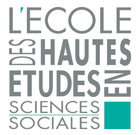
- Auteurs
- Livres originaux
- Traductions :
par titre par sujet par série - Critiques
- Rechercher
Membres Ressources en ligne Bibliographie Colloques BAT Publications
Johann Joachim Winckelmann
Statut : Commissario delle Antichità
9.12.1717-8.7.1768
Notes : The son of a cobbler and a weaver’s daughter, Winckelmann was born in poverty in the small Prussian town of Stendal. After studies in theology, mathematics, medicine and the classics at the universities of Halle and Jena, he worked between 1743 and 1748 as deputy headmaster of the gymnasium of Seehausen in the Altmark. A major turning-point was his appointment as librarian to Count Heinrich von Bünau at his country estate in Nöthnitz near Dresden, where Winckelmann read widely (with ascetic sleep deprivation) to acquire an encyclopaedic knowledge of natural sciences, history, classical antiquity as well as the fine arts. A year after moving to Dresden he published his first essay, Gedanken über die Nachahmung der griechischen Werke in der Malerei und Bildhauerkunst (1755). A stipend from the Saxon court allowed him to travel to Rome within the same year and focus his studies on ancient art. Unable to survive as a freelance writer and antiquarian, he eventually decided to enter the service of Cardinal Alessandro Albani as a librarian and custodian of his patron’s extensive collection of Greco-Roman antiquities. His most important work is undoubtedly the Geschichte der Kunst des Altertums (1764), sometimes thought to be the first truly pan-European bestseller. Most contemporaries valued the book for its elegant prose descriptions of the ‘masterpieces’ of ancient sculpture in Roman collections. As a reference work it remained indeed unsurpassed until the appearance of K.O. Müller’s Handbuch der Archäologie der Kunst (1835). Modern scholars recognize in Winckelmann’s systematic attempt at stylistic classification of ancient sculpture, and its chronological correlation with Greek and Roman political history, a foundational moment for the disciplines of archaeology and art history, although the degree to which his study resulted from visual analysis of the monuments (rather than skilful re-working of the ancient sources) is disputed (see Donohue contra Potts). In 1768 Winckelmann was murdered in Trieste under mysterious circumstances. The numerous translations and editions in French, German and Italian were mostly based on Winckelmann’s unfinished revision of the Geschichte, posthumously published by his friend J.F. Riedel (Vienna, 1776). The first complete translation into English appeared only in 2006 (History of the art of antiquity, Los Angeles, trans. H.F. Mallgrave). A. Potts, Flesh and the ideal (New Haven, 1994); A.A. Donohue, in W.G. Moon (ed.), Polykleitos, the Doryphoros, and tradition (Madison, 1995) 327-353.
Traductions :
- Auteur de Reflections concerning the imitation of the Grecian artists in painting and sculpture, in a series of letters (1766)
- Auteur de Alte Denkmäler der Kunst, zuerst von Johann Winkelmann herausgegeben und erklärt (1791-92)
- Auteur de Lettres familières de Winckelmann, sur divers sujets. Avec son éloge historique (1781)
- Auteur de Critical account of the situation and destruction by the first eruption of Mount Vesuvius, of Herculaneum, Pompeii, and Stabia (1771)
- Auteur de The history of ancient Art among the Greeks (1850)
- Auteur de The history of ancient art (1849-73)
- Auteur de Histoire de l'art chez les anciens (1766)
- Auteur de Histoire de l'art de l'antiquité (1781)
- Auteur de Oeuvres complètes de Winckelmann. Histoire de l'art chez les anciens; traduite de l'allemand, avec des notes historiques et critiques de différens auteurs (1794 (AN II)- 1803)
- Auteur de Reflections on the painting and sculpture of the Greeks: with instructions for the connoisseur, and an essay on grace in works of art (1765)
- Auteur de Lettre de M. l'abbé Antiquaire de sa Sainteté à M. le Comte de Brühl sur les découvertes d'Herculanum (1764)
- Auteur de Histoire de l'art de l'antiquité (1781)
- Auteur de Remarques sur l'architecture des anciens et sur celle des temples de Girgenti (1783)
- Auteur de Recueil des lettres de M.W. sur les découvertes faites à Herculanum, à Pompeii, à Stabia et à Rome (1784)
- Auteur de Recueil des différentes pièces sur les arts (1786)
- Auteur de Histoire de l'art chez les anciens (1789)
- Auteur de Lettres familières de M. Winckelmann. Avec les oeuvres de M. le Chevalier Mengs (1784)
- Auteur de Histoire de l'art chez les anciens, par Winkelmann; traduite de l'allemande; avec des notes historiques et critiques de differens aucteurs ()
- Auteur de Essay on the Laokoön; Remarks on the torso of Hercules (1872)
- Auteur de Élémens du dessin, ou Proportions des plus belles figures de l'Antiquité, à l'usage de ceux qui se destinent aux beaux arts, ornées de 33 planches, contenant 37 figures antiques mesurées dans toutes leurs parties..accompagnées de leur description par.. (1798(An VI))
- Auteur de Storia delle arti del disegno presso gli Antichi.. Tradotta dal tedesco con note originali degli editori (1779)
- Auteur de Histoire de l'art chez les anciens/par M. J. Winckelmann..ouvrage traduit de l'Allemand (1784)
- Auteur de Storia delle arti del disegno presso gli antichi di G.W. Tradotta dal Tedesco e in questa edizione corretta e aumentata dall' abate C. Fea, etc. (1783-4)
- Auteur de ISTORIA ISKUSSTVA DREVNOSTI. S PRILOZHENIEM IZBRANNYKH MELKIKH SOCHINENIJ I BIOGRAFIEI WINKELMANA, SOST. PROF. JU. LESSINGOM. (1890)
- Auteur de Description of Apollo Belvedere (1873)
- Auteur de Ercolano Pompei: piccola antologia winckelmaniana (1912)
- Auteur de Opere di G.G. Winckelmann (1830-34)
